The problem of overheating of lighting LEDs and solutions
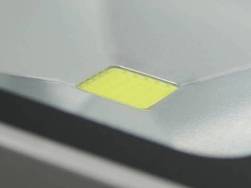 When compared with rapidly fading light sources, LED sources have only one, but a very serious flaw. Their durability and reliability largely depend on the efficiency of heat removal from light emitting components. Therefore, the protection circuit of the LED from overheating is an important component of any high-quality LED lighting system.
When compared with rapidly fading light sources, LED sources have only one, but a very serious flaw. Their durability and reliability largely depend on the efficiency of heat removal from light emitting components. Therefore, the protection circuit of the LED from overheating is an important component of any high-quality LED lighting system.
The average light-emitting diode LED ten times surpasses a traditional bulb with a filament in energy efficiency (profitability). However, if the LED is not installed on a radiator of sufficient area, then it will most likely fail quickly. It is generally accepted, without going into details, that more efficient lighting LEDs need more efficient heat dissipation than conventional ones. Let us nevertheless examine the problem more deeply ...
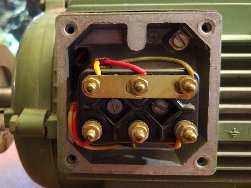 It often happens, especially in everyday life, that an asynchronous electric motor must be connected to a standard single-phase AC network with an operating voltage of 220 volts. And the engine is three-phase! This task is typical when we need to install an emery or a drilling machine, for example, in a garage.
It often happens, especially in everyday life, that an asynchronous electric motor must be connected to a standard single-phase AC network with an operating voltage of 220 volts. And the engine is three-phase! This task is typical when we need to install an emery or a drilling machine, for example, in a garage.
To arrange everything correctly, they use the so-called starting and working (phase-shifting) capacitors. In general, capacitors are of different types, different capacities, and before proceeding with the construction of the circuit, it is necessary to choose capacitors of the appropriate type, rated voltage and correctly calculate their required capacitance. Everyone knows that an electric capacitor is two conductive plates separated by a dielectric, and serves to accumulate, temporarily store and transfer electric charge, that is, electric energy ...
The principle of operation of a self-regulating heating cable
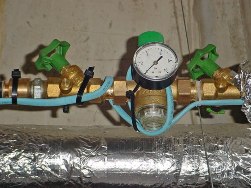 In the winter season, the roof, cornices, water, sewer and drainpipes, and many other communication elements, tend to freeze. The problem is that when the air temperature drops below zero, the water outside and inside many pipes quickly freezes. The resulting ice interferes with the functioning of communications, and ice on roofs and cornices is a separate, well-known and very acute problem. Self-regulating heating cable helps to solve all these problems.
In the winter season, the roof, cornices, water, sewer and drainpipes, and many other communication elements, tend to freeze. The problem is that when the air temperature drops below zero, the water outside and inside many pipes quickly freezes. The resulting ice interferes with the functioning of communications, and ice on roofs and cornices is a separate, well-known and very acute problem. Self-regulating heating cable helps to solve all these problems.
A self-regulating heating cable, as its name implies, is able to automatically adjust the degree of heating it provides. Moreover, different sections of the cable, being installed on various elements located at different temperatures, will have exactly the temperature that is necessary to maintain the correct temperature of the heated surface. The lower the temperature of the heating object, the more the corresponding section of the cable will warm up ...
Street lighting with solar lamps
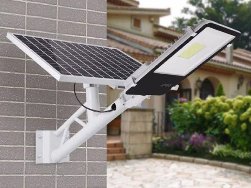 In the dark, summer cottages, driveways and simply garden paths, flower beds and lawns will be wonderfully complemented by a small solar-powered autonomous lighting system. Lamps of this plan not only give soft, not harsh light, but also simply decorate the territory. And from an economic point of view, they also contribute to the conservation of monetary resources. Let's take a closer look at these fixtures, talk about their design, consider the advantages and disadvantages of such systems for cottages and estates.
In the dark, summer cottages, driveways and simply garden paths, flower beds and lawns will be wonderfully complemented by a small solar-powered autonomous lighting system. Lamps of this plan not only give soft, not harsh light, but also simply decorate the territory. And from an economic point of view, they also contribute to the conservation of monetary resources. Let's take a closer look at these fixtures, talk about their design, consider the advantages and disadvantages of such systems for cottages and estates.
Solar-powered evening lanterns can be seen for a long time in the squares, near cafes and shops, they also appear in the dachas, where guests visit from time to time.And this situation is justified, because having arrived at the cottage, we want to relax or, say, receive guests in a beautiful, cozy, calm environment, in a word - in comfortable, pleasant for the soul conditions. Solar-powered flashlights just create such conditions. In addition, the presence of workers in the dark ...
Voltage divider for resistors, capacitors and inductors
 In order to obtain a fixed voltage value equal to a fraction of the initial value, voltage dividers are used in electrical circuits. Voltage dividers can consist of two or more elements, which can be resistors or reactances (capacitors or inductors).
In order to obtain a fixed voltage value equal to a fraction of the initial value, voltage dividers are used in electrical circuits. Voltage dividers can consist of two or more elements, which can be resistors or reactances (capacitors or inductors).
In its simplest form, the voltage divider is represented by a pair of sections of the electric circuit connected in series with each other, which are called the shoulders of the divider. The upper arm is the section that is located between the point of positive voltage and the selected connection point of the sections, and the lower arm is the section between the connection point (selected point, zero point) and the common wire. Of course, voltage dividers can be used both in direct current circuits and in alternating current circuits. Resistor dividers fit for those...
Why in different countries the voltage and frequency in the electric network differ
 In the Soviet Union until the 1960s, AC mains voltage had an effective value of 127 volts. In the United States during the same years, the voltage at the outlet reached 120 volts. Later, the current voltage values in the networks will be standardized with changes in order to reduce copper consumption for wires, because for transmitting the same electric power, the smaller the cross-section of the wires is, the smaller the current, and the current in the wire will be the smaller, the higher the voltage at transmission.
In the Soviet Union until the 1960s, AC mains voltage had an effective value of 127 volts. In the United States during the same years, the voltage at the outlet reached 120 volts. Later, the current voltage values in the networks will be standardized with changes in order to reduce copper consumption for wires, because for transmitting the same electric power, the smaller the cross-section of the wires is, the smaller the current, and the current in the wire will be the smaller, the higher the voltage at transmission.
However, this transition will not happen immediately. Economically, the transmission of electricity at high voltage, of course, is more profitable, but switching to another voltage on a national scale is by no means cheap, not to mention changing current frequency standards. Historically, the first electric networks in the United States owed their voltage of 110 volts to the famous inventor Thomas Alva Edison.This is his light bulbs with carbon filaments were calculated ...
How to correctly calculate and choose a resistor for an LED
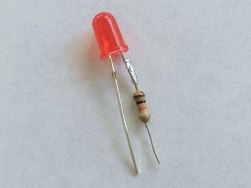 Each of us saw the LED. An ordinary small LED looks like a plastic cone-lens on conductive legs, inside of which there is a cathode and anode. In the diagram, the LED is depicted as a regular diode, from which the arrows indicate the emitted light. So the LED is used to receive light when electrons move from the cathode to the anode - visible light is emitted by the p-n junction.
Each of us saw the LED. An ordinary small LED looks like a plastic cone-lens on conductive legs, inside of which there is a cathode and anode. In the diagram, the LED is depicted as a regular diode, from which the arrows indicate the emitted light. So the LED is used to receive light when electrons move from the cathode to the anode - visible light is emitted by the p-n junction.
To properly connect the LED to the power source, you must first observe the polarity. The anode of the LED is connected to the plus “+” of the power source, and the cathode to the minus “-”. The cathode connected to the minus has a short output, the anode, respectively, is long - the long leg of the LED is on the plus “+” of the power source.Solder the LED leads carefully and quickly, because the semiconductor junction is very afraid of excess heat, so you need to touch with a brief motion of the soldering iron ...
What are Nextion displays and how to work with them?
 For the implementation of any projects, whether it is a smart home, industrial automation, a device for outputting computer systems, or a simple clock, you will need an output device. A simple option is seven-segment LED indicators. But such an implementation would be inconvenient to use. To make the system modern and convenient, you need to use full-fledged LCD displays. In this article, we will talk about Nextion displays, what it is, how, and why they can be used.
For the implementation of any projects, whether it is a smart home, industrial automation, a device for outputting computer systems, or a simple clock, you will need an output device. A simple option is seven-segment LED indicators. But such an implementation would be inconvenient to use. To make the system modern and convenient, you need to use full-fledged LCD displays. In this article, we will talk about Nextion displays, what it is, how, and why they can be used.
The manufacturer positions the Nextion touch displays as HMI - Human-machine interface, which in Russian sounds like a "Human-machine interface." This is the name of any device with the help of which human-machine interactions take place: parameter monitoring, control of actuators, data entry, etc. In practice, this is not just a display, but a device with a 32-bit ARM microcontroller on board, which "can" not only display data ...
